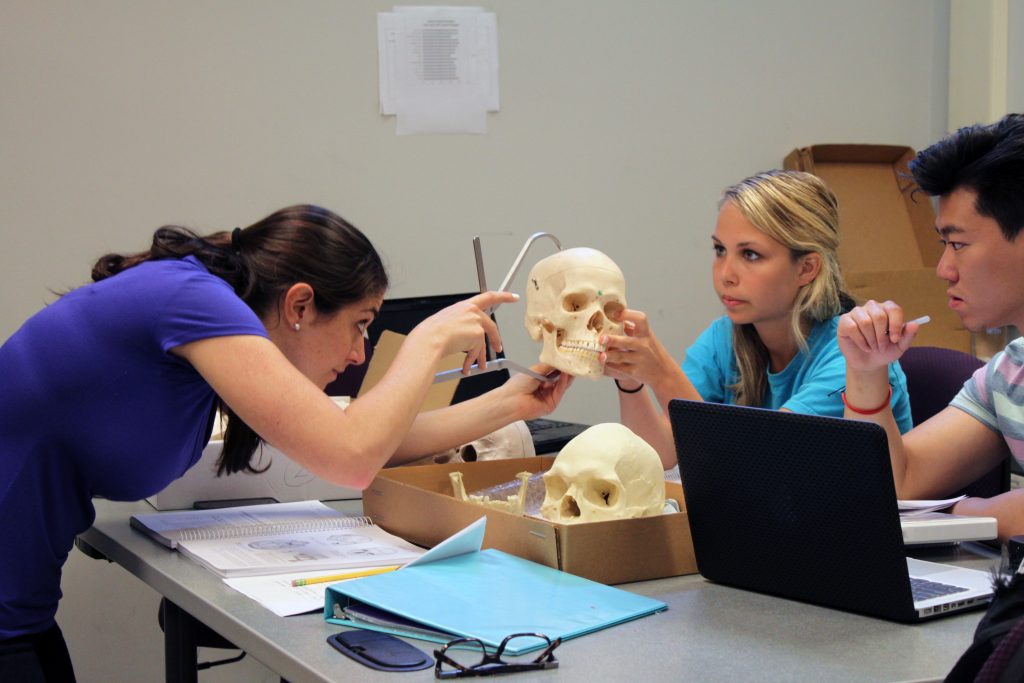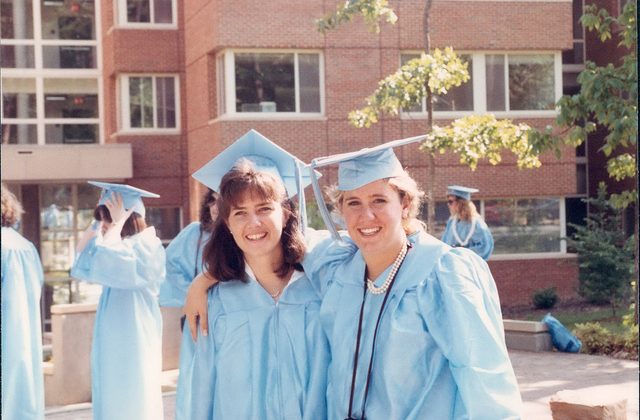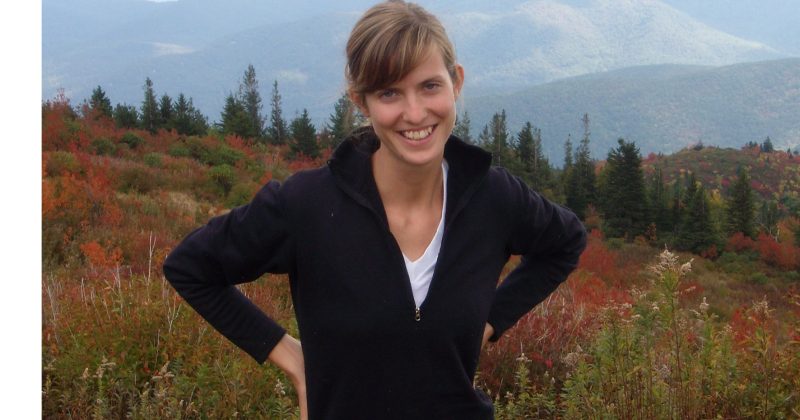
Students in Professor Dale Hutchinson's class. (Photo by Beth Lawrence)
Professor: Dale Hutchinson
Anthropology Professor Dale Hutchinson teaches students how to map and recover the elements of a crime scene in his class, Anthropology 423: “Written in Bone: CSI and the Science of Death Investigations from Skeletal Remains.” The course combines laboratory training, field projects, lectures, films, discussion and student presentations about the science of human skeletal analysis.
A popular topic
Hutchinson said students often enroll in the class with no experience working with human skeletons because of the widespread popularity of forensics as a television subject.
Patrick Morrison (Spanish, biology ’15) said he took the class because he likes the TV show Bones, and he is considering forensic anthropology as a possible career path.
Maymester
The class was taught in a three-week session during Maymester, so students attended longer classes every day. Maymester is an intense academic “mini-term” that begins the week after spring finals. Courses often feature a research or experiential learning component.
“This is a chance for them to get into a really, really different learning situation,” Hutchinson said. In one day Hutchinson says he typically uses three methods of instruction to break up the time. Students might go from taking notes on a lecture to a quiz and then directly to examining the bones.
Grant Muir (anthropology, political science, ’15) said this method brings the material to life. “It helps to go from something like doing a Power Point and then the next hour visualizing the bones and holding the bones,” he said.
A hands-on experience
In the class students learn how to recognize trauma resulting from different weapons. They explore how to distinguish a person’s age, sex and height from skeletal remains.
Rachel Dickinson (global studies, French, ’13) said her favorite part of the class was a day when the students dug up bones Hutchinson set up as part of a “crime scene.” They analyzed the bones at the lab.
Muir said he enjoyed being able to see and touch a part of the past: “You really get a sense of what things feel like, and what they’ll look like after a certain amount of time.”
[ Story and video by Beth Lawrence ’12 ]
Published in the Fall 2013 issue | The Scoop
Read More

Living with Joy: New book chronicles alum’s journey with Lou Gehrig’s disease
When veteran journalist Susan Spencer-Wendel (international studies ’88) was diagnosed…

Front Porch Portal: Home for southern research celebrates 20 years
The tree-shaded, white-frame house at 410 E. Franklin Street has…


